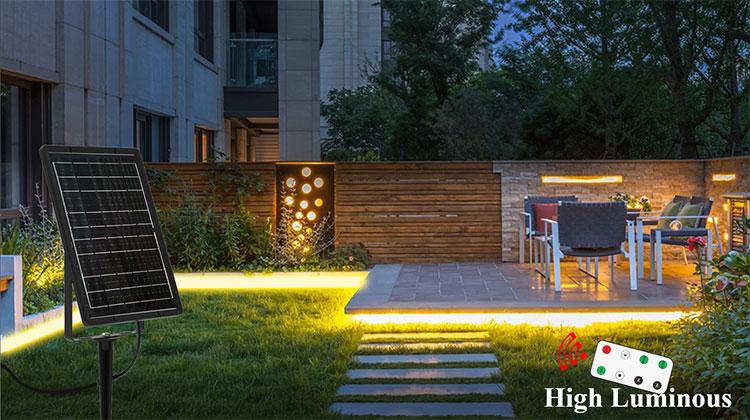Nowadays, more and more people are paying attention to the issues of environmental protection and energy saving. Using solar lights is a wise choice to reduce carbon emissions. Solar lights can not only illuminate your home but also can be charged with solar energy with no wires and at low costs. However, when choosing solar lights, we often fall into the following misunderstandings.

The higher the wattage of the lamp, the better it is!
Many lights on the market are indicated 500W and 1000W, and it can be judged that they are 100% false. Generally, the wattage of street lights above 50W can already meet people’s basic brightness needs. According to energy conservation theory, a larger wattage means the lights will be brighter, and the corresponding brightness duration will decrease. Although many solar lights are marked with a wattage of 100W, in reality, they only have 20W. Therefore, we think it is unscientific to use wattage to measure the quality of a solar lamp. Using lumens to measure brightness is more scientific, which refers to the maximum lumen value within a constant time.
Polycrystalline silicon is better than monocrystalline silicon in solar panels!
Some say that the energy conversion rate of monocrystalline silicon is higher, and the low-light performance of polycrystalline silicon is better. But in fact, the current conversion efficiency of monocrystalline silicon and polycrystalline silicon is similar, and even the cost is almost the same under the same process. The batteries in the solar panel are graded, and the quality and efficiency must be different. If a good solar panel is used with good craftsmanship, there is no problem with its life span of 15 to 25 years.
The larger the size of the solar panel, the brighter it is!
The working principle of solar light is as follows: it is converted into electrical energy through a solar panel, which is stored in the battery. Then, when needed (at night), it is boosted or output to the LED lamp panel through a control panel to generate light energy. So, based on our previous question, simply increasing the area of the solar panel cannot effectively determine whether the light is good or very bright! Even if a large solar panel is used, the batteries and LEDs are not working well. It is useless. Just like judging whether a car is good or bad, we cannot say that a big car is good. What suits you is the best.
The bigger the size of the battery capacity, the better it is!
The battery is the deepest place in the whole solar lamp industry. Both the ternary lithium battery and the lithium iron phosphate battery have their characteristics. As long as the quality of the new battery is used, it is all right.
Most solar lamp batteries on the market are lithium-iron phosphate batteries. Because of their large size, the dismantling cost is relatively low; Most ternary lithium batteries are brand new. Because the dismantling cost and price of the 18650 ternary lithium battery are relatively high, it is used in the high-end lighting market.
Now there are a variety of solar lamp styles on the market. We choose solar lights from regular manufacturers, and there is generally no problem in use.

